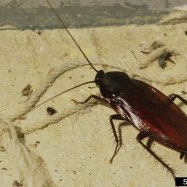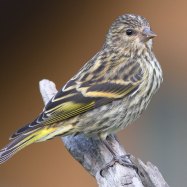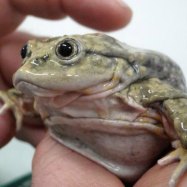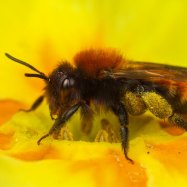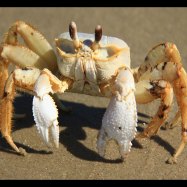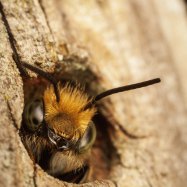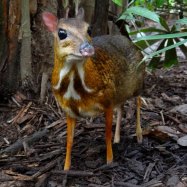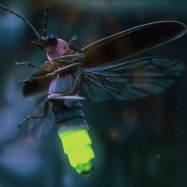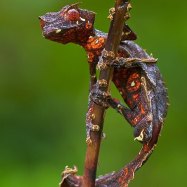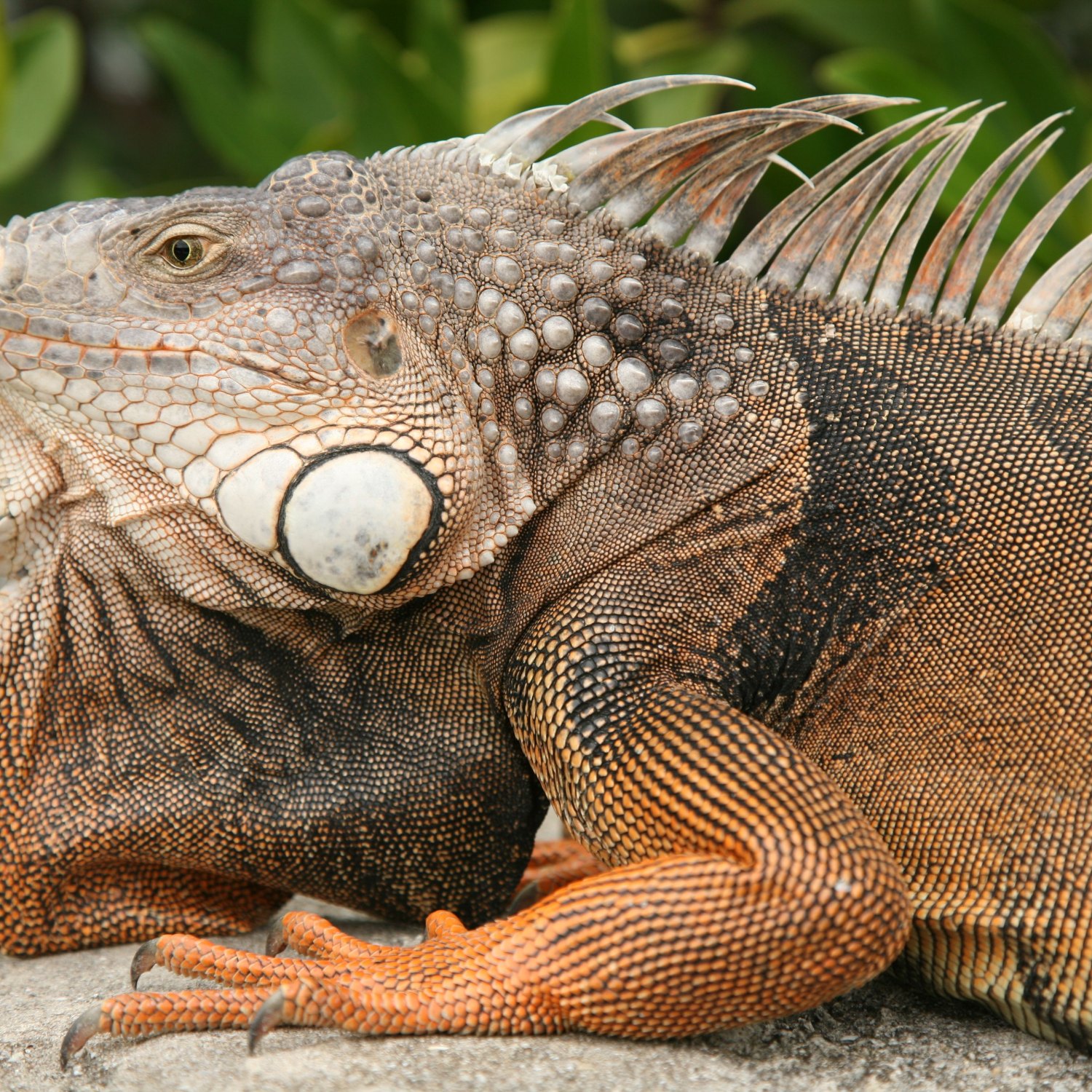
Iguana
5-7 feet (1.5-2.1 meters)
The iguana, a popular member of the Iguanidae family, is a large reptile with a long body and tail. These fascinating creatures can grow between 5 to 7 feet and are often found in trees or forest floors. With their vibrant coloration and unique body shape, iguanas are a must-see for nature enthusiasts. #Iguana #Reptiles #NatureLovers
Animal Details Summary:
Common Name: Green Iguana
Kingdom: Animalia
Habitat: Tropical rainforests and adjacent areas
The Fascinating World of Green Iguanas: A Closer Look into the Life of this Remarkable Reptile
When we think of lizards, the image of a small, scaly creature may come to mind. However, in the tropical rainforests of Central and South America, there is a reptile that defies this stereotype with its large and majestic appearance – the Green Iguana. Despite its common name, the Green Iguana's scientific name is Iguana iguana, a testament to its uniqueness even in the scientific world. This stunning creature is a member of the Animalia kingdom, Chordata phylum, Reptilia class, and Squamata order, and belongs to the Iguanidae family Iguana. In this article, we will take a closer look at the Green Iguana, exploring its habitat, diet, appearance, behavior, and other fascinating facts.The Habitat of Green Iguanas
Green Iguanas are native to the tropical rainforests and adjacent areas of Central and South America. They are also found in countries such as Mexico, Brazil, Venezuela, Colombia, Paraguay, and Bolivia. Their natural habitat is within the trees and forest floors, where they can easily bask in the warm sun and find food. Due to their increasing popularity as pets, Green Iguanas are now found in different parts of the world, such as the United States, Europe, and Asia. While they can adapt to different environments, they thrive in warm and humid climates, making them well-suited to their native rainforest habitats.The Herbivorous Diet of Green Iguanas
Green Iguanas are primarily herbivorous, meaning they feed on plant matter. They have a specialized diet that consists of fruits, leaves, flowers, and even some vegetables. What is interesting is that their feeding habits change as they mature Indian Star Tortoise. Young Green Iguanas tend to eat more insects and small prey, but as they grow, they switch to a plant-based diet. This change in diet is due to the changes in their digestive system, which becomes more equipped to digest plant matter as they reach adulthood. This transition is also essential for their growth, as they require a significant amount of calcium, which is mostly found in greens.In captivity, Green Iguanas should be fed fresh and clean food, that is free from pesticides and other harmful chemicals. A variety of fruits and vegetables should make up the majority of their diet, with a small portion of high-quality protein such as cooked eggs or chicken. It is crucial to provide them with a balanced and nutritious diet to maintain their health and well-being.
The Appearance of Green Iguanas
Green Iguanas are known for their striking colors and impressive size. They have a bright green body with black stripes or patches, that act as camouflage in their natural habitat. These colors can also vary depending on their age, with older Green Iguanas having more muted tones. Interestingly, their coloration can also change to a darker shade when they are cold or stressed.In terms of body shape, Green Iguanas have a large and elongated body, with a long tail that can make up to two-thirds of their overall length. Their tail serves many purposes, including balance, defense, and even as a whip to deter predators. These impressive reptiles can reach lengths of 5-7 feet (1.5-2.1 meters) when measured from their snout to the tip of their tail. They also have sharp claws, used for climbing trees and digging.
The Behavior of Green Iguanas
Green Iguanas are mostly solitary creatures and are often found lounging in the sun, high up in trees. They are diurnal, meaning they are most active during the day and rest at night. Despite their size, they are incredibly agile and can quickly climb trees and swim in water bodies. This ability to swim is essential for their survival, as they often find themselves jumping into water bodies to escape predators, such as birds of prey and wild cats.Another interesting aspect of Green Iguanas' behavior is their social hierarchy, with dominant males establishing territories and defending them from potential suitors. Females will only mate with the dominant male in their territory, ensuring the survival of their offspring. Green Iguanas are also known for their complex communication system, which includes visual displays, vocalizations, and body posturing.
The Unique Aspects of Green Iguanas
Aside from their striking appearance, Green Iguanas have several unique characteristics that make them fascinating creatures. Here are a few noteworthy facts about these reptiles:- Green Iguanas are one of the few reptiles that can recognize and show affection to humans. They may even develop a preference for certain individuals and enjoy being petted and touched.
- They have a special third eye, called the parietal eye, located on top of their head. While it has limited vision, it helps Green Iguanas detect changes in light and shadows, and also aids in thermoregulation.
- In the wild, Green Iguanas can live for up to 20 years. However, if kept as pets, they can live for over 25 years in captivity.
- Green Iguanas are often used in laboratory research and have contributed to significant advancements in the medical field. Some scientists believe that studying these reptiles could provide insights into human evolution due to their shared ancestry with dinosaurs.
- Female Green Iguanas can lay up to 20-40 eggs at a time, which they bury in the ground for incubation. Juvenile Green Iguanas hatch after approximately 80 days and must fend for themselves immediately.
The Increasing Threats to Green Iguanas
Despite their remarkable characteristics and adaptability, Green Iguanas are facing several threats that put their survival at risk. Habitat destruction, primarily due to deforestation, is the most significant threat to these reptiles. Constant loss of their natural habitat leads to a decline in their population due to the lack of food and shelter. Moreover, the illegal pet trade has contributed to the decline of wild Green Iguanas, as they are often captured and sold as pets. The illegal pet trade not only harms the individual animals but also disrupts the balance of their natural ecosystem.The Efforts to Protect Green Iguanas
Efforts are being made to protect Green Iguanas and increase their population. Many organizations, such as the IUCN (International Union for Conservation of Nature), are working towards conserving and protecting these reptiles' natural habitat. They are also raising awareness about the threats Green Iguanas face in hopes of reducing illegal activities, such as the pet trade. Several education and conservation programs have also been established, with the goal of educating people about the importance of preserving our natural world.The Green Iguana as a Pet
Green Iguanas are often sought after as pets due to their intriguing appearance and docile nature. However, it is essential to understand that owning a Green Iguana requires a great deal of commitment and responsibility. They are not beginner pets and need a specialized environment and diet to thrive. They also require regular veterinary care and should only be purchased from reputable breeders.In conclusion, Green Iguanas are truly remarkable creatures that have captured the imagination of many people worldwide. They are not only fascinating to look at, but their behavior and unique characteristics make them valued members of our ecosystem. While their survival is threatened by human activities, we can help protect them by respecting their natural habitat and appreciating them as the incredible creatures they are.

Iguana
Animal Details Iguana - Scientific Name: Iguana iguana
- Category: Animals I
- Scientific Name: Iguana iguana
- Common Name: Green Iguana
- Kingdom: Animalia
- Phylum: Chordata
- Class: Reptilia
- Order: Squamata
- Family: Iguanidae
- Habitat: Tropical rainforests and adjacent areas
- Feeding Method: Herbivorous
- Geographical Distribution: Central and South America
- Country of Origin: Central and South America
- Location: Trees and forest floors
- Animal Coloration: Green with black stripes or patches
- Body Shape: Large and elongated body with a long tail
- Length: 5-7 feet (1.5-2.1 meters)
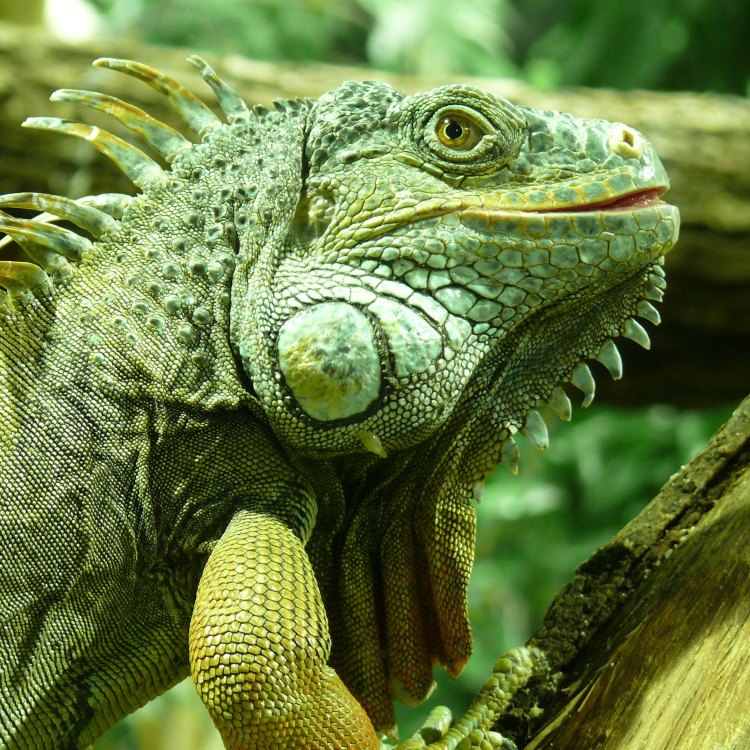
Green Iguana
- Adult Size: 4-6 feet (1.2-1.8 meters)
- Average Lifespan: 10-20 years
- Reproduction: Sexual
- Reproductive Behavior: Males court females, then they mate and lay eggs
- Sound or Call: Frequent vocalizations consisting of hisses, squeals, and grunts
- Migration Pattern: Non-migratory
- Social Groups: Solitary, except during the breeding season
- Behavior: Bask in the sun, swim, climb, and hide in trees
- Threats: Habitat loss, hunting, and invasive species
- Conservation Status: Not globally threatened
- Impact on Ecosystem: Seed dispersers
- Human Use: Pet trade, food, and medicinal purposes
- Distinctive Features: Scales, long tail, and dewlap (throat fan)
- Interesting Facts: Can change color, have a third eye on the top of their head
- Predator: Birds of prey, snakes, and large mammals
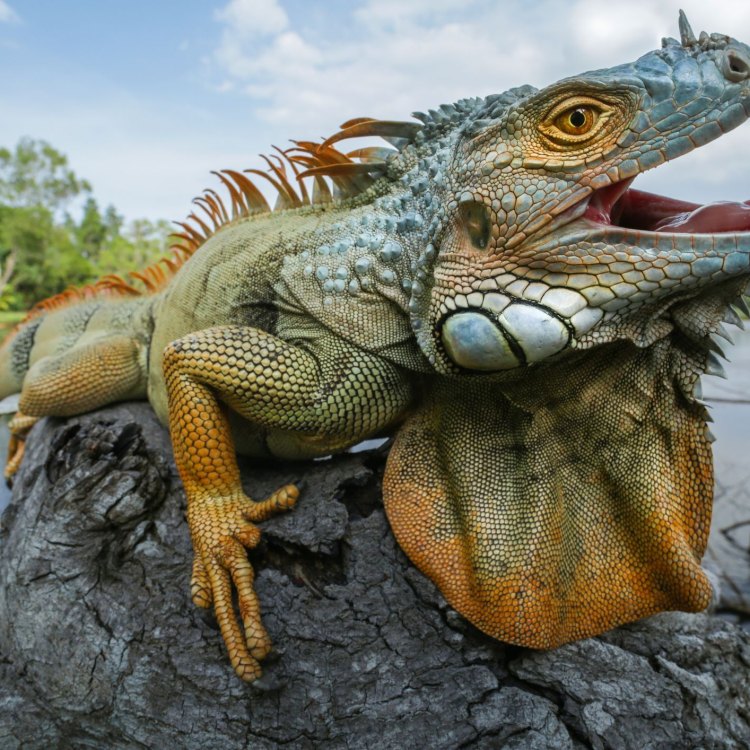
Iguana iguana
Uncovering the Unique World of the Iguana: From Courtship to Conservation
The world is full of fascinating creatures, each with its own unique characteristics and behaviors. One such creature that often captures our attention is the iguana. These reptiles, with their distinctive features and intriguing behaviors, have become a popular pet choice for many people. But beyond being just a pet, the iguana plays a vital role in its ecosystem and has a rich history that is worth exploring PeaceOfAnimals.Com.Let's dive into the world of the iguana, from their courtship rituals to their role in conservation, and discover what makes them truly unique.
The Basics: Size, Lifespan, and Reproductive Behavior
The iguana is a large reptile, with the adults reaching an average size of 4-6 feet (1.2-1.8 meters). They have a lifespan of 10-20 years, which can even extend up to 30 years in captivity with proper care. Their reproductive behavior is sexual, meaning they require a male and a female to reproduce.During breeding season, male iguanas use various courtship behaviors to attract females, including head bobbing, push-ups, and nodding. Once the female chooses a suitable male, they mate, and the female lays 2-60 eggs, depending on factors such as age, health, and size.
The Sounds of the Iguana and Non-migratory Patterns
Although mostly silent, iguanas can produce a wide range of vocalizations consisting of hisses, squeals, and grunts Inland Taipan. These sounds are frequent and can serve as a form of communication between individuals or as a warning to potential threats.Unlike other reptiles that migrate, iguanas are non-migratory creatures. They are native to Central and South America but can also be found on islands such as Galapagos and Fiji, where they were introduced by humans. They adapt well to different environments and can be found in a range of habitats, including forests, deserts, and even urban areas.
Solitary Social Groups and Diverse Behaviors
Iguanas are solitary animals, except during the breeding season when they come together to mate. Outside of breeding season, they spend most of their time alone, basking in the sun, swimming, and climbing trees. They are excellent swimmers and also have the ability to hold their breath for up to 30 minutes while underwater.Despite their solitary nature, iguanas are not entirely anti-social. In fact, they have been observed to form small social groups with other iguanas when resources are limited. They also have diverse behaviors, such as digging burrows, foraging for food, and using their dewlap (throat fan) to regulate body temperature.
The Threats to Iguanas and Their Conservation Status
Like many other species, iguanas face threats to their survival. Habitat loss, through deforestation and urbanization, is one of the biggest threats to iguanas. This loss of habitat not only affects their survival directly, but it also disrupts their food sources and breeding sites.Another significant threat to iguanas is hunting. In some regions, iguanas are hunted for their meat, which is considered a delicacy. They are also captured and sold in the pet trade, with some species being more popular than others. This demand for iguanas in the pet trade has led to the illegal poaching of wild individuals, further impacting their populations.
Invasive species also pose a threat to iguanas. These non-native species can compete with iguanas for resources and also prey on them. In some cases, invasive species have even caused the decline of certain iguana species, such as the Fiji banded iguana.
Despite these threats, not all hope is lost for the survival of iguanas. According to the International Union for Conservation of Nature (IUCN), most iguana species are not considered globally threatened. However, some species, such as the Fijian crested iguana, are listed as critically endangered, highlighting the need for conservation efforts.
Iguanas: More Than Just a Pet or a Meal
Iguanas have been a part of human history for centuries. In various cultures, they are considered a source of food, medicine, and even used in traditional ceremonies. They are also popular as pets, with their unique appearance and docile nature. However, owning an iguana as a pet comes with a significant responsibility.As mentioned earlier, the demand for iguanas in the pet trade has led to illegal poaching and smuggling of wild individuals. This not only harms the iguanas but also disrupts their ecosystems. In captivity, iguanas also require specific care and a suitable environment to thrive. Therefore, it is essential to research and understand the needs of an iguana before deciding to bring one home as a pet.
The Unique Features of Iguanas: From Scales to a Third Eye
Iguanas are easily identified by their distinctive features. They have large, overlapping scales covering their bodies, which act as protection against predators. These scales also help regulate their body temperature and can change color depending on their mood and environment.One of the most fascinating features of iguanas is their long tail, which can reach up to two-thirds of their total body length. This tail serves various purposes, from balancing while climbing to acting as a weapon against predators.
But perhaps the most unique feature of iguanas is the dewlap or throat fan. This loose skin under their chin can be inflated to display vibrant colors and patterns. While it serves as a form of communication and a way to attract mates, the dewlap also plays a crucial role in regulating body temperature.
And if these features weren't enough to make iguanas truly remarkable, they also have a third eye on the top of their head called the parietal eye. This third eye is not capable of forming images but can detect light and movement, serving as an extra defense against predators.
The Impact of Iguanas on Their Ecosystem
Iguanas play a vital role in their ecosystems, and their presence (or absence) can significantly impact the balance of the ecosystem. As herbivores, iguanas consume a variety of plants and fruits, making them important seed dispersers. By consuming and dispersing seeds, iguanas help with the growth and diversity of plant species in their habitats.Furthermore, iguanas are also prey for a range of predators, such as birds of prey, snakes, and large mammals. They act as an essential link in the food chain and help maintain balance within their ecosystems.
Unlock the World of Iguanas: A Unique and Important Species
From their courtship rituals to their role in conservation, it is evident that iguanas are a unique and important species. With their diverse behaviors, distinctive features, and impact on the ecosystem, it's not just their charm that captures our attention, but also their significance in the natural world.However, as with any other species, it is crucial to ensure the protection and preservation of iguanas. By understanding and appreciating them, we can ensure a sustainable future for these remarkable creatures. So let's continue to uncover the world of iguanas and appreciate all that they have to offer.
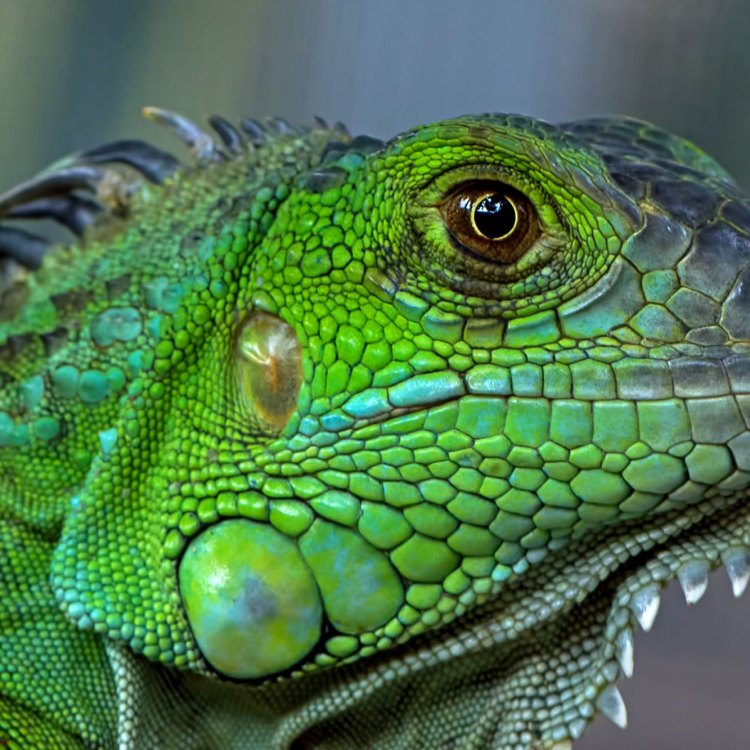
The Fascinating World of Green Iguanas: A Closer Look into the Life of this Remarkable Reptile
Disclaimer: The content provided is for informational purposes only. We cannot guarantee the accuracy of the information on this page 100%. All information provided here may change without prior notice.

